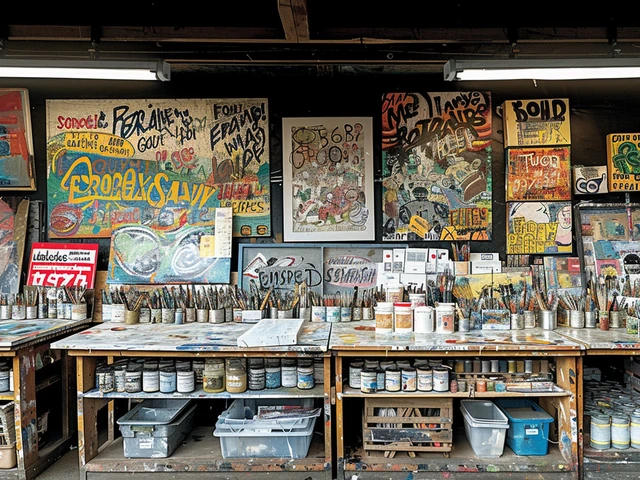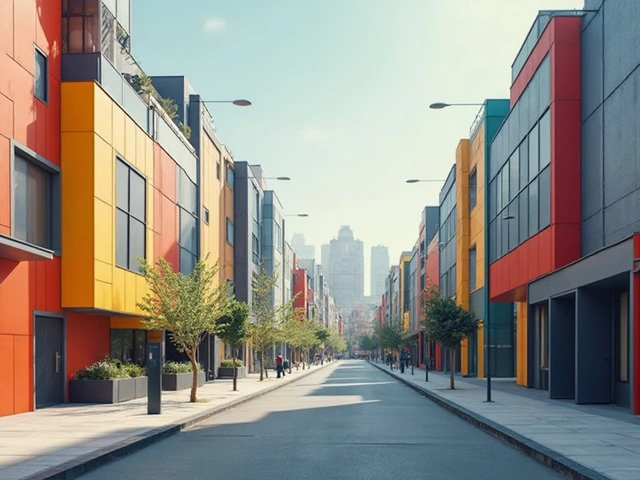Understanding De Stijl: A Journey into Minimalism
When it comes to design, there's something irresistibly refreshing about stripping away the noise and focusing on the essentials. Like decluttering a highly congested room to reveal a calming, peaceful corner, the De Stijl art movement birthed a philosophy of simplicity that holds profound elegance. This movement, originating in the Netherlands in 1917, serves up minimalism on a canvas of primary colors red, blue, yellow, punctuated by simple lines, squares, and rectangles. For aeons—or at least what feels like aeons in the design world—De Stijl, or "The Style", has been inspiring designers, architects, and creators who hold the simplicity baton with pride.
Even a century later, De Stijl's influence lingers in sleek furniture, striking architectural lines, and modern artwork. Whenever I stumble across a De Stijl-inspired piece, I can’t help but feel an instant wave of calm wash over me. It's like listening to a symphony where every musician plays one exquisite note; the harmony is walking into a room where each item speaks in a soft whisper, allowing the space itself to be the conversation.
The Pillars of De Stijl: Breaking Down the Basics
At heart, De Stijl is more than just a cute, trendy approach to design—it's a deep dive into the core principles of what makes things, well, work. It's about achieving balance, harmony, and order. If you envision the art movement as a tree, the roots are firmly grounded in neoplasticism—the idea that there exists a universal aesthetic through reduction and simplification. It wasn't just about making a bold statement; it was a profound exploration of how less can be brilliantly more.
This movement was pioneered by the likes of Theo van Doesburg and Piet Mondrian. These visionaries didn't just dream up a couple of paintings; they envisioned a world where every aspect of life could be reduced to the essentials. Let's imagine for a moment the monumental task of stripping away all that is unnecessary, revealing an artistic axiom that is equal parts stunning and understated. Every time I simplify a complicated recipe to its essential flavors, I tip my hat to these pioneers—it's amazing how much more vibrant a dish can taste when it isn't overshadowed by a pantry's worth of ingredients!
The Chromatic Signature: The De Stijl Trilogy Colors
The allure of De Stijl is often wrapped in its chromatic restraint—a trilogy of primary colors that seems to mock the excesses of the rainbow. Red, yellow, and blue became, in essence, the holy trinity of De Stijl. Alongside these audacious hues, crisp whites, stoic grays, and bold blacks compose the backbone of the style. You could say the De Stijl palette is kind of like that trusty trio of jeans, a white tee, and a black leather jacket—it somehow never goes out of fashion.
Every time I repaint a room or design a website, I'm reminded of the immense power of these primary colors. They're like the lead singers in the band, with black and white on the drums and bass—setting the rhythm and foundation for the visual melody they create. It's not just about tossing brightly colored paint on a canvas but conjuring up the exact emotion intended. That's the kind of alchemy that De Stijl plays with, creating a vibrant dance of colors in its most unadulterated form.
Geometry as Art: Lines, Planes, and the Third Dimension
The De Stijl aficionados found a kindred spirit in geometry. Lines, both horizontal and vertical, and flat planes became their trusted companions on the journey of artistic exploration. The movement stepped away from the suggestion of depth, reveling in the beauty of the two-dimensional plane. One could say Mondrian and his pals were painting the essence of reality rather than an imitation of it.
Whenever I fiddle with my old-school Legos—no, they’re not just for kids—there's a profound realization of the boundless creativity within a finite set of shapes. This echoes De Stijl's philosophy—creating infinite possibilities with straight lines and right angles. It's a visual language that strips back superfluous detail, leaving viewers to wade in the serenity of perfect geometry. The third dimension seems almost passé when you're lost in the bold lines and stark planes of a De Stijl composition.
The Spatial Symphony: De Stijl in Architecture and Interior Design
I must admit, there's a particular giddiness that takes over when I spot De Stijl's thumbprint in architecture and interior design. It's like discovering a secret handshake within the urban jungle. The Rietveld Schröder House in Utrecht is a splendid example—a symphony of space where walls slide and environments transform with a fluidity that enchants the soul.
When you break down those walls, both literally and metaphorically, space becomes more than just a room—it's a piece of livable art. Envisioning a living space as a blank canvas for De Stijl principles feels like an open invitation to infuse life with the meditative quality of simplicity. It's not merely about a house, but a sanctuary cleansed of chaos, fostering a crispness that supports both peace and creativity. And whenever I try to declutter a room, moving bits here, adjusting shades there, I chuckle thinking, "Is this what Mondrian felt like plotting out his compositions?"
The Influence and Legacy: De Stijl's Enduring Impact
The echoes of De Stijl's footsteps reverberate across time, influencing generations of creators. It's fascinating to trace its principles in various modernist and post-modernist works, seeing its legacy stretch into graphic design, advertising, and even film. The movement has not just survived; it's thrived, finding new life as each era turns this philosophy over in its hands, examining and reimagining it.
Once upon a time, I came across an avant-garde theater set designed entirely in De Stijl's fashion. It was like stepping into a Mondrian painting, with actors gliding through geometric harmonies. Frankly, it blew my mind like a leaf in a hurricane and left me deeply appreciative of De Stijl's subtle, yet powerful influence. After all, the creators of De Stijl didn't restrict their ambitions to canvases or furniture—they dreamt of shaping life itself with their aesthetic, and in many ways, they succeeded spectacularly.
The Practice of De Stijl: Tips for Embracing Minimalism
If the De Stijl philosophy has tickled your fancy and you're itching to dip your toes into the minimalist waters, there are a few starter tips to keep in mind. First, choose a restrained color palette and let those few hues do the heavy lifting. Simplicity doesn't equal boredom; it's about narrowing focus to create a strong visual impact.
Also, I’d say don’t be afraid to play with geometry; let those lines and rectangles be your vocabulary in a silent poem about space. Less is more, and when it comes to furnishings and décor, opting for items that underscore the De Stijl aesthetic can cultivate a sense of serenity and intentional design. I remember when I arranged my first De Stijl-inspired shelf, it wasn't just a piece of storage; it was a manifesto of the space's purpose—a collage of necessity and consciousness.
Reflections in Modern Times: De Stijl Today
The beauty of De Stijl is its timeless relevance. In today's world of fast-paced, lightning-in-a-bottle trends, witnessing a century-old art philosophy retain gravitas and freshness is a testament to the enduring power of simplicity. Be it the modern minimalist home, a sleek logo, or even in the stark lines of a website, De Stijl's fingerprints can be found constantly shaping the contemporary design conversation.
Every now and then, when I administrate the CSS of my blog, polishing the layout, ensuring the visuals resonate with my words, I can't help but feel connected to the De Stijl movement. Bringing balance and simplicity to my digital space is a way to incorporate these timeless principles into my daily creative practice. As life spins increasingly complex webs, De Stijl stands as a beacon, illuminating the potency of stripping back to the beautiful basics—perhaps this is the true beauty of simplicity, one that De Stijl so perfectly encapsulates and shares with the world.



